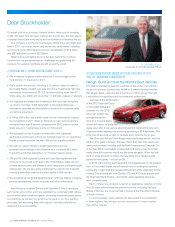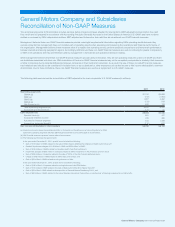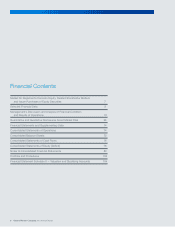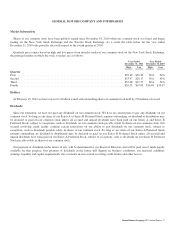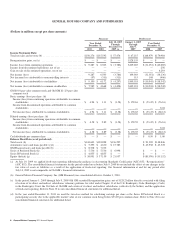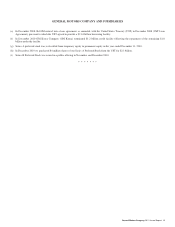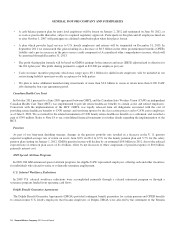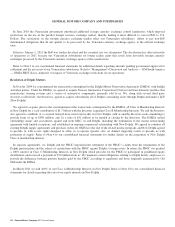General Motors 2011 Annual Report Download - page 14
Download and view the complete annual report
Please find page 14 of the 2011 General Motors annual report below. You can navigate through the pages in the report by either clicking on the pages listed below, or by using the keyword search tool below to find specific information within the annual report.GENERAL MOTORS COMPANY AND SUBSIDIARIES
Our Strategy
Our vision is to design, build and sell the world’s best vehicles. The primary elements of our strategy to achieve this vision are to:
• Deliver a product portfolio of the world’s best vehicles, allowing us to maximize sales under any market conditions;
• Sell our vehicles globally by targeting developed markets, which are projected to have increases in vehicle demand as the
global economy recovers, and further strengthening our position in high growth emerging markets;
• Improve revenue realization and maintain a competitive cost structure to allow us to remain profitable at lower industry
volumes and across the lifecycle of our product portfolio; and
• Maintain a strong balance sheet by reducing financial leverage given the high operating leverage of our business model.
Chapter 11 Proceedings and the 363 Sale
Background
Over time as Old GM’s market share declined in North America, Old GM needed to continually restructure its business operations
to reduce cost and excess capacity. Legacy labor costs and obligations and capacity in its dealer network made Old GM less
competitive than new entrants into the U.S. market. These factors continued to strain Old GM’s liquidity. In 2005 Old GM incurred
significant losses from operations and from restructuring activities such as providing support to Delphi Corporation (Delphi) and other
efforts intended to reduce operating costs. Old GM managed its liquidity during this time through a series of cost reduction initiatives,
capital markets transactions and sales of assets. However, the global credit market crisis had a dramatic effect on Old GM and the
automotive industry. In the second half of 2008, the increased turmoil in the mortgage and overall credit markets (particularly the lack
of financing for buyers or lessees of vehicles), the continued reductions in U.S. housing values, the volatility in the price of oil,
recessions in the U.S. and Western Europe and the slowdown of economic growth in the rest of the world created a substantially more
difficult business environment. The ability to execute capital markets transactions or sales of assets was extremely limited, vehicle
sales in North America and Western Europe contracted severely, and the pace of vehicle sales in the rest of the world slowed. Old
GM’s liquidity position, as well as its operating performance, were negatively affected by these economic and industry conditions and
by other financial and business factors, many of which were beyond its control.
As a result of these economic conditions and the rapid decline in sales in the three months ended December 31, 2008 Old GM
determined that, despite the actions it had then taken to restructure its U.S. business, it would be unable to pay its obligations in the
normal course of business in 2009 or service its debt in a timely fashion, which required the development of a new plan that depended
on financial assistance from the U.S. government.
In December 2008 Old GM requested and received financial assistance from the U.S. government and entered into the UST Loan
Agreement. In early 2009 Old GM’s business results and liquidity continued to deteriorate, and, as a result, Old GM obtained
additional funding from the UST under the UST Loan Agreement. Old GM also received funding from Export Development Canada
(EDC), a corporation wholly-owned by the government of Canada, under a loan and security agreement entered into in April 2009
(EDC Loan Facility).
As a condition to obtaining continued 2009 funding under the UST Loan Agreement, Old GM was required to submit a plan in
February 2009 that included specific actions (Viability Plan) intended to result in the following:
• Repayment of all loans, interest and expenses under the UST Loan Agreement, and all other funding provided by the U.S.
government;
• Compliance with federal fuel efficiency and emissions requirements and commencement of domestic manufacturing of
advanced technology vehicles;
• Achievement of a positive net present value, using reasonable assumptions and taking into account all existing and projected
future costs;
12 General Motors Company 2011 Annual Report


